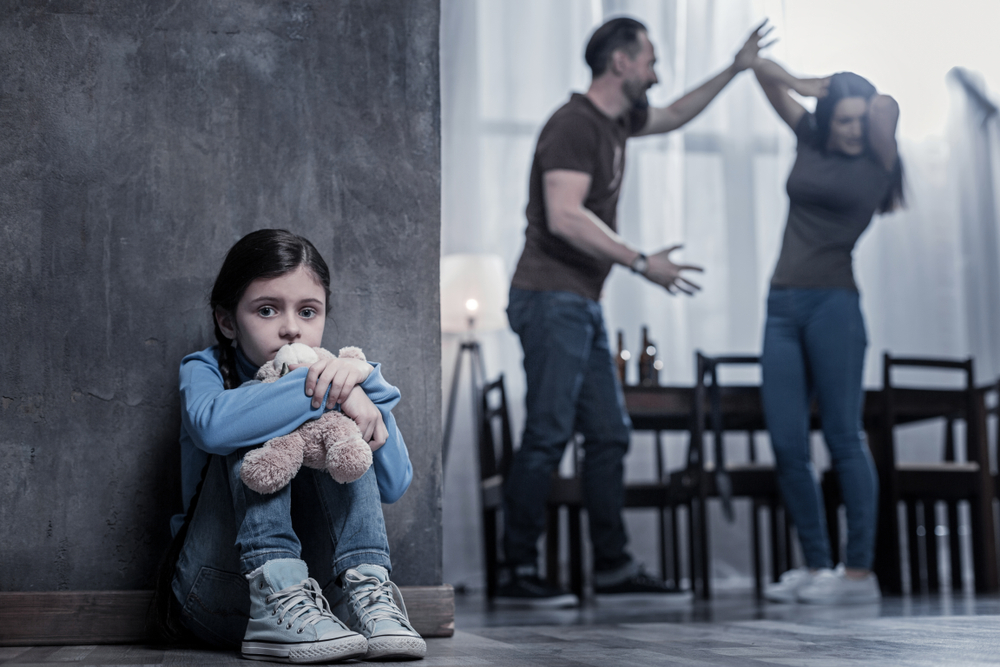Understanding Domestic Violence

Domestic violence is a serious issue that affects millions of people worldwide. It is a pattern of abusive behavior in any relationship that is used to gain or maintain power and control over an intimate partner. Domestic violence can take many forms, including physical, emotional, sexual, and financial abuse.
Prevalence and Impact of Domestic Violence
Domestic violence is a pervasive problem, impacting individuals, families, and society as a whole. According to the World Health Organization, nearly one in three women worldwide has experienced some form of physical or sexual violence in their lifetime.
- Impact on Individuals: Domestic violence can have devastating consequences for individuals, including physical injuries, mental health problems, such as depression, anxiety, and post-traumatic stress disorder (PTSD), and substance abuse. It can also lead to social isolation, financial instability, and difficulty in maintaining relationships.
- Impact on Families: Domestic violence can have a ripple effect on families, impacting children, who may witness or experience abuse directly, and may suffer from emotional distress, behavioral problems, and developmental delays. It can also lead to family instability, separation, and divorce.
- Impact on Society: Domestic violence is a significant public health issue, resulting in high healthcare costs, lost productivity, and increased crime rates. It can also contribute to social inequality and perpetuate cycles of violence.
Psychological and Social Factors Contributing to Domestic Violence
Domestic violence is a complex issue with multiple contributing factors, including psychological and social factors.
- Psychological Factors: These factors include personality disorders, such as borderline personality disorder and narcissistic personality disorder, which can be associated with abusive behavior. Other psychological factors include anger management issues, low self-esteem, and a history of trauma.
- Social Factors: These factors include cultural norms that promote gender inequality, social isolation, and economic dependence. It is important to note that these factors do not excuse abusive behavior; they help to understand the complex context in which domestic violence occurs.
Recognizing the Signs and Symptoms: Domestic Violence

Domestic violence is a complex issue that can manifest in many ways. Recognizing the signs and symptoms is crucial for both individuals experiencing abuse and those who may be witnessing it. Understanding the patterns of abuse can empower individuals to seek help and break the cycle of violence.
Physical Injuries
Physical injuries are a common sign of domestic violence. They can range from minor bruises and cuts to severe injuries requiring medical attention. Victims may be reluctant to report injuries, fearing further violence or retaliation. It is important to be aware of any unexplained injuries or inconsistencies in explanations.
Emotional Manipulation
Emotional manipulation is a form of abuse that aims to control and undermine the victim’s self-esteem and sense of reality. It can involve:
- Gaslighting: Making the victim doubt their own sanity and perception of events.
- Isolation: Separating the victim from friends and family to increase their dependence on the abuser.
- Threats and intimidation: Using fear and coercion to control the victim’s behavior.
- Public humiliation: Embarrassing the victim in public to damage their reputation and social standing.
Controlling Behavior
Abusers often exert control over their victims’ lives through various means, including:
- Restricting access to finances: Controlling the victim’s money and preventing them from having financial independence.
- Monitoring their movements: Tracking their location, phone calls, and online activity.
- Controlling their appearance: Dictating what they wear, how they style their hair, and other aspects of their appearance.
- Restricting their social activities: Preventing them from spending time with friends and family.
Impact of Domestic Violence on Victims
Domestic violence has profound and lasting consequences for victims, impacting their physical, emotional, and psychological well-being.
- Physical injuries: Victims may experience injuries ranging from minor bruises to severe trauma.
- Emotional distress: Domestic violence can lead to anxiety, depression, low self-esteem, and post-traumatic stress disorder (PTSD).
- Psychological consequences: Victims may experience difficulty trusting others, fear of intimacy, and a sense of hopelessness.
Impact on Children
Domestic violence can have devastating effects on children who witness or experience it.
- Emotional and behavioral problems: Children may exhibit anxiety, depression, aggression, and difficulty concentrating.
- Increased risk of future involvement in violence: Children who witness domestic violence are more likely to engage in violence themselves later in life.
- Long-term health consequences: Children exposed to domestic violence are at an increased risk of developing chronic health problems.
Seeking Help
It is crucial to remember that you are not alone. If you or someone you know is experiencing domestic violence, there are resources available to help.
- Reach out to a trusted friend or family member for support.
- Contact a local domestic violence hotline or shelter for confidential assistance.
- Seek professional help from a therapist or counselor specializing in domestic violence.
Seeking Help and Support

Leaving an abusive relationship can be a difficult and frightening step, but it is essential for your safety and well-being. Remember that you are not alone and there are many resources available to help you break free from the cycle of violence and rebuild your life.
Available Resources
A comprehensive network of support systems exists to assist victims of domestic violence. These resources offer a lifeline, providing shelter, counseling, legal aid, and emotional support.
- Shelters: Domestic violence shelters provide safe housing and support services to victims fleeing abusive situations. They offer temporary refuge, counseling, legal assistance, and other resources to help individuals regain stability and safety.
- Hotlines: Domestic violence hotlines provide confidential, 24/7 support and resources to victims. They offer immediate crisis intervention, information on available services, and referrals to local resources.
- Legal Aid: Legal aid organizations provide legal assistance to victims of domestic violence, helping them navigate the legal system and obtain protection orders, custody arrangements, and other legal remedies.
- Therapy and Counseling: Therapy and counseling can help victims process trauma, develop coping mechanisms, and build healthy relationships. These services are crucial for emotional healing and recovery.
Breaking the Cycle of Violence
Domestic violence is a complex issue with deep-rooted causes, often stemming from power imbalances, control, and unhealthy relationship patterns. Breaking the cycle of violence requires a multifaceted approach that addresses the root causes and empowers individuals to build healthy relationships.
- Understanding the Cycle of Violence: Recognizing the patterns of abuse and the stages of the cycle of violence can help individuals identify the warning signs and take steps to protect themselves.
- Building Self-Esteem and Confidence: Domestic violence often erodes self-esteem and confidence. Building these qualities is crucial for breaking free from the cycle of abuse and developing healthy relationships.
- Learning Assertive Communication Skills: Effective communication is essential for healthy relationships. Assertive communication skills can help individuals express their needs and boundaries in a clear and respectful manner.
- Seeking Support and Accountability: Support from family, friends, therapists, or support groups can provide a safe space to process experiences, develop coping mechanisms, and hold abusers accountable for their actions.
Seeking Safety and Support: A Guide
Navigating domestic violence can be overwhelming. This guide provides a step-by-step approach to seeking safety and support:
- Recognize the Signs of Abuse: Identify the patterns of abuse and acknowledge that you are not responsible for the abuser’s actions. Domestic violence is never acceptable, and you deserve to be safe and respected.
- Develop a Safety Plan: Create a plan for how you will keep yourself safe, including identifying safe places to go, packing essential items, and establishing a communication plan with trusted friends or family members.
- Reach Out for Help: Contact a domestic violence hotline, shelter, or other support organization. They can provide immediate support, resources, and guidance.
- Seek Legal Protection: If you are in immediate danger, call 911 or your local emergency number. Consider obtaining a restraining order or other legal protection to ensure your safety.
- Focus on Healing and Recovery: Take time to heal from the trauma of abuse. Seek therapy or counseling to process your experiences, develop coping mechanisms, and build healthy relationships.
Domestic violence is a serious issue that affects millions of people worldwide. It’s important to remember that seeking help is a sign of strength, and there are resources available to support survivors. While the personal lives of celebrities like Skai Jackson may be of interest to some, it’s crucial to remember that relationships, even those in the public eye, can be complex.
To learn more about Skai Jackson’s current relationship status, you can visit who is skai jackson boyfriend. Regardless of her personal life, it’s vital to prioritize the well-being of those experiencing domestic violence and offer support to those in need.
Domestic violence is a serious issue that affects countless individuals and families. It’s crucial to remember that help is available for those who need it. A recent example of a public figure speaking out against domestic violence is skai jackson news.
Skai Jackson’s activism on this issue highlights the importance of raising awareness and promoting support for victims. By speaking out, individuals like Skai Jackson can empower others to break the cycle of violence and seek the assistance they deserve.